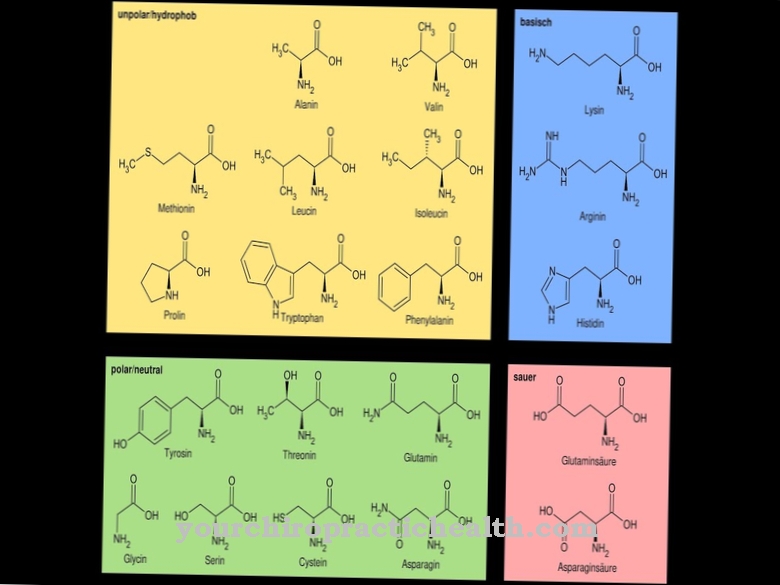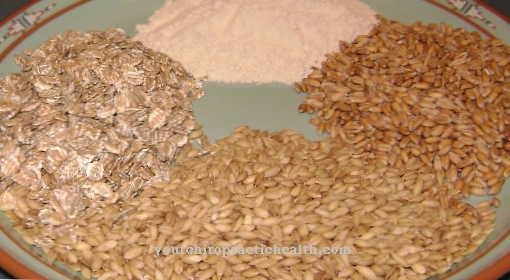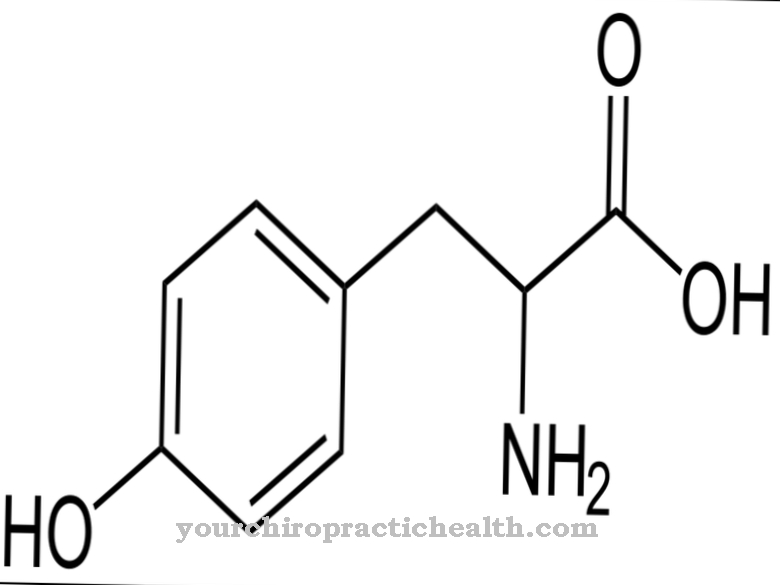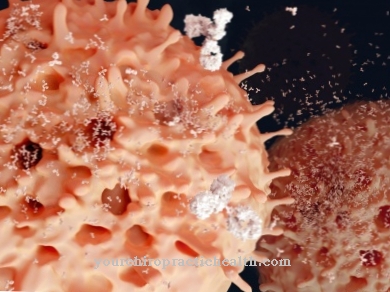Proopiomelanocortin (POMC) is a so-called prohormone, from which over ten different active hormones can be formed. The prohormone is synthesized in the adenohypophysis, in the hypothalamus as well as in the placenta and the epithelia in order to express the corresponding hormones there. A deficiency in POMC leads to serious hormonal disorders in the organism.
What is Proopiomelanocortin?
Proopiomelanocortin is a protein made up of 241 different amino acids. As a substance itself it is ineffective in the organism because it is only a so-called prohormone. As a prohormone, however, it can be broken down into over ten important active hormones via various intermediate steps.
This happens through the influence of convertases. The convertases, in turn, are enzymes that catalytically support the conversion steps of the prohormone into active substances. These reactions are called limited proteolysis. Complicated regulatory mechanisms in the body only convert enough proopiomelanocortin to produce a sufficient concentration of the respective active target hormones. POMC is encoded by a gene on chromosome segment 2p23.3.
The individual active peptide hormones are split off post-translationally from the prohormone proopiomelanocortin. A changed structure of these hormones is therefore only mediated via the gene 2p23.3. A mutation in this gene has a great influence on the hormonal processes in the human organism.
Function, effect & tasks
Among the ten active hormones that are split off from proopiomelanocortin are such agents as adrenocorticotropin (ACTH), melanocyte-stimulating hormones, γ-lipotropin (γ-LPH) and β-endorphin. The hormone corticotropin like intermediate peptide (CLIP) is also formed. ACTH is formed in the anterior pituitary gland under the influence of corticotropin releasing hormone (CRH).
It is responsible for the synthesis of steroids and stimulates the adrenal glands to produce cortisone and mineral corticoids. It also stimulates the production of sex hormones such as testosterone and estrogens. It is always formed to a greater extent during stress, as it is also responsible for the formation of the stress hormone cortisone. The melanocyte-stimulating hormones are produced in the hypothalamus and pituitary lobes and are responsible for activating the melanocortin receptors. In doing so, they regulate the formation of melanin in melanocytes. Furthermore, they regulate the fever reaction and are involved in controlling the feeling of hunger and sexual arousal.
The melanocyte-stimulating hormones are in turn formed from an intermediate product in the breakdown of proopiomelanocortin, the β-lipotropin. β-lipotropin itself also has a lipid mobilizing effect. In addition to the hormones that stimulate melanocytes, γ-lipotropin and endorphins are also formed from β-lipotropin. The endorphins have an analgesic effect and are responsible, among other things, for the feeling of hunger and the development of the feeling of happiness or euphoria through the activation of the dopamine-dependent synapses. For this reason, the prohormone proopiomelanocortin plays a major role in the regulation of hunger and sexuality, for the sensation of pain, for the physical energy balance, body weight and the stimulation of melanocytes.
Education, occurrence, properties & optimal values
As already mentioned, proopiomelanocortin is formed in the adenohypophysis, the hypothalamus, the epithelia and the placenta. The prohormone, also known as POMC, is encoded by a gene on chromosome 2 on chromosome segment 2p23.3. As a prohormone, it is in an inactive form. By splitting into different active peptide hormones, different bodily functions can be fulfilled that seem to have nothing to do with each other.
If this prohormone fails, however, its extremely important function for the organism is expressed, since at the same time the active hormones split off from proopiomelanocortin are also missing or have functional disorders. However, POMC is not converted into all subsequent peptide hormones at the same time. The individual reaction steps are coordinated via complex regulatory mechanisms. The corticotropin releasing hormone (CRH) is responsible for the formation of ACTH from POMC in the adenohypophysis. It becomes active, for example, when there is stress related to illness, emotions, physical and psychological stress or depression.
Diseases & Disorders
A deficiency in proopiomelanocortin has great effects on the organism. The entire downstream hormone balance gets mixed up as a result. Initially, the peptide hormones split off from proopiomelanocortin are absent or show functional defects.
A genetically modified prohormone cannot split off fully functional peptide hormones. An extreme clinical picture, which is related to a deficiency in proopiomelanocortin, is characterized by extreme obesity. This obesity has existed since birth. In addition, the patients' hair is colored red. The clinical picture includes hypoglycemic convulsions, cholestasis and hyperbilirubinemia. Weight regulation is not possible due to extreme hyperphagia (overeating) as a result of the dysregulation of the hunger center. Adrenal insufficiency also develops because the glucocorticoids and mineral corticoids can no longer adequately form.
Overall, the disease leads to death from liver failure if left untreated. However, this extreme clinical picture has only rarely been observed so far. A total of ten cases have been described so far. The cause of this syndrome is the lack of POMC due to a mutation in the 2p23.3 gene. This genetic defect is inherited as an autosomal recessive trait. The rarity of this disease is due to the fact that a complete absence of POMC or a serious defect that leads to functional failure is incompatible with life. Therefore, only a few mutations in this gene result in viable offspring, but they have serious health problems.
In terms of differential diagnosis, it is of course necessary to rule out several diseases that result from subsequent regulatory errors in the hormonal system. Complete proof of the disease can only be made through a genetic test.
























.jpg)



